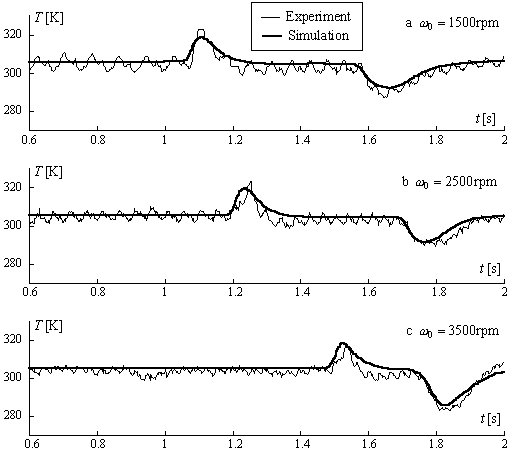SI Engine Modeling
An internal combustion engine has been the most frequently motor used in automotive systems. As a "motion supplier", the internal combustion engine dominantly influences many important characteristics of a vehicle, such as driveability,
driving comfort, fuel consumption, and pollutant emissions. The competition of automotive manufacturers and more stringent legislative have imposed continuous improvements of engine characteristics. An efficient and often very economical solution to these improvements includes application of modern control algorithms and devices. The control algorithms mostly rely on the good knowledge of the engine dynamic behavior, which is represented by faithfull, but yet compact mathematical models.
So far, our research group has been dealing with control-oriented mean value models of the spark ignition (SI) internal combustion engine. These models can be used for the development of fuel delivery control systems (air/fuel ratio control), engine speed control systems (e.g. idle speed control), on-line engine torque estimators, or just for accurate and efficient computer simulations of the engine dynamics.
The SI engine dynamic behavior is dominantly determined by the intake manifold thermal transient effects. Hence, the particular attention has been paid on modeling of the manifold dynamics. The standard manifold models usually neglects the temperature changes of the intake manifold air during different engine transients (isothermal assumption). However, some more recent research results have pointed out to significant changes of the manifold air temperature, that have been covered by an adiabatic model (no heat transfer between manifold air and its walls). The both assumptions, isothermal and adiabatic, are limit cases, and a polytropic assumption of state changes would certainly be the more realistic one.
Our research group has been developing lumped-parameters models based on the polytropic assumption. The basic polytropic model developed includes two states (manifold air pressure and temperature) and a variable heat transfer coefficient. It has been extended to a more accurate three-state model, in order to account for possibly different heat transfer characteristics of the plenum and runners. The backflow effect of hot cylinder gasses has been included in the model as well. The research has also covered a comparative algebraic analysis of manifold dynamics for different heat transfer assumptions.
The developed engine models have been validated based on the measurement data obtained on an SI engine experimental setup. Some of the validation results are shown in the below figure.
One of the main applications of the developed model would be estimation and prediction of output manifold air mass flow (or cylinder air charge) for the purpose of effective air/fuel ratio control. A detailed simulation analysis has shown that manifold modeling errors can have a significant influence on the accuracy of air charge estimation and prediction based on the manifold pressure measurement.

Publications
-
IEEE/ASME Transactions on Mechatronics, Vol. 11, No. 5, pp. 513-523, 2006. -
Experimental Setup for Engine Modelling and Control Research
Strojarstvo, Vol. 46, No. 1-3, pp. 39-50, 2004. -
Recent Advances in Control-Oriented Modeling of Automotive Power Train Dynamics
Proceedings of International IEEE Symposium on Industrial Electronics (ISIE 2005), Vol. 1, pp. 269-278, Dubrovnik, Croatia, 2005. -
Identification and Speed Control of SI Engine for Idle Operating Mode
SAE paper #2004-01-0898, 2004 SAE World Congress, Detroit, MI, 2004. -
Influence of Intake Manifold Heat Transfer Effects on Accuracy of SI Engine Air Charge Prediction
Proceedings of 2004 ASME International Mechanical Engineering Congress and Exposition (IMECE 2004), Vol. 2, Anaheim, CA, 2004. -
Initial experiments on a setup for IC engine modeling and control research
6th International Conference and Exhibition Innovative Automotive Technology - IAT, 2003. -
Analysis of Mean Value Engine Model with Emphasis on Intake Manifold Thermal Effects
Proceedings of 2003 IEEE Conference on Control Applications (CCA 2003), pp. 161-166, Istanbul, Turkey, 2003. -
A Control-Oriented Polytropic Model of SI Engine Intake Manifold
Proceedings of 2003 ASME International Mechanical Engineering Congress and Exposition (IMECE 2003), Vol. 2, Washington, D.C., 2003. -
SI Engine Load Torque Estimator Based on Adaptive Kalman Filter
Hrvatski patentni glasnik, Vol. 14, No. 2, Patentni broj PK20040222, 2007. -
Modeling and Control of a Modern Turbodiesel Engine [open access]
Master, 2009.